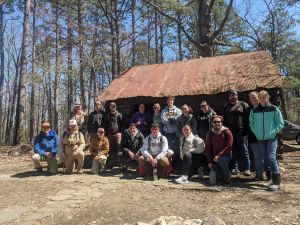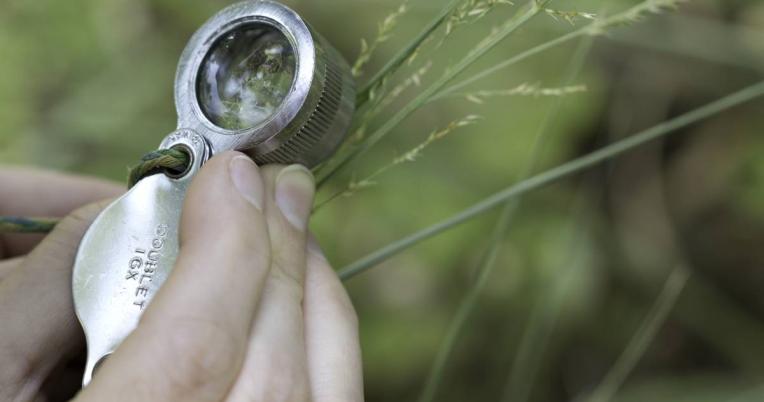Missouri Ozark Forest Ecosystem Project (MOFEP) StoryMap
Missouri Ozark Forest Ecosystem Project YouTube Playlist
MOFEP provides science-based information to forest managers so they may employ management practices that ensure healthy and sustainable forest, fish and wildlife resources while also providing opportunities to all Missouri citizens to use, enjoy and learn about their forest resource.
Why?
MOFEP was initiated in 1989 amid concerns over the impacts of clearcutting on neotropical songbirds. Specifically, increased pressure from nest predators and the nest parasite, the brown-headed cowbird , were causing declines in nest success, especially along forests edges created by the clearcuts.
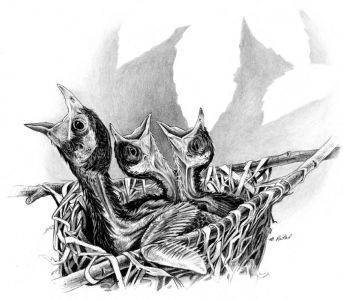
Scientists were initially interested in learning more about the impacts of forest management on breeding songbirds in the Missouri Ozarks, a heavily forested portion thought to be a potential source for numerous neotropical species. However, it was quickly realized that there were also questions about forest management impacts on other ecosystem components.
- Living Components
- Trees
- Plants
- Birds
- Amphibians and Reptiles
- Small Mammals
- Invertebrates
- And more!
Non-living Components
- Soil
- Geology
- Weather and climate
- Carbon
- And more!
Establishment
One of the first challenges was to find the best location for MOFEP. The project needed to be on state-owned land and on forests that had not been cut in at least 40 years so that the sites had similar forest structure and age. The answer was found in the heavily forested Ozarks in southeastern Missouri. Nine sites, each about 1,000 acres, are located on the Current River Conservation Area in Shannon and Reynolds counties and the Peck Ranch Conservation Area in Carter County.
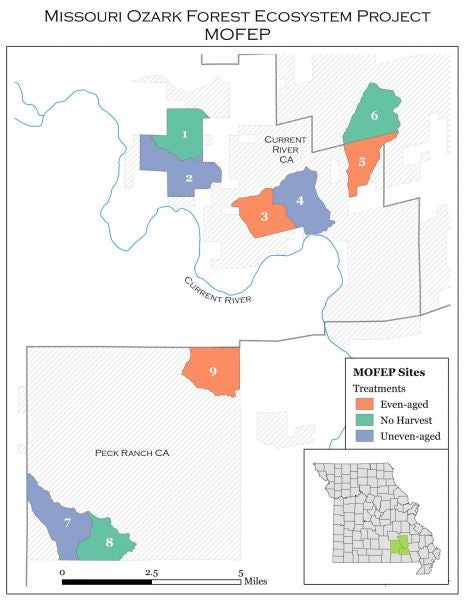
In 1990, the installation of study plots and the collection of pre-treatment data began. The first management treatment occurred in 1996, followed by more data collection and a second management treatment in 2011. To measure the long-term impacts of forest management, MOFEP will continue to implement treatments and collect forest data for 100–200 years!
MOFEP Forest Management Systems
MOFEP was designed to study the impacts of three common forest management systems on ecosystem components: even-aged management, uneven-aged management, and no harvesting.
Each MOFEP site was randomly assigned one of these three management systems. Each site functions as an operational forest compartment that is further divided into smaller units called stands.
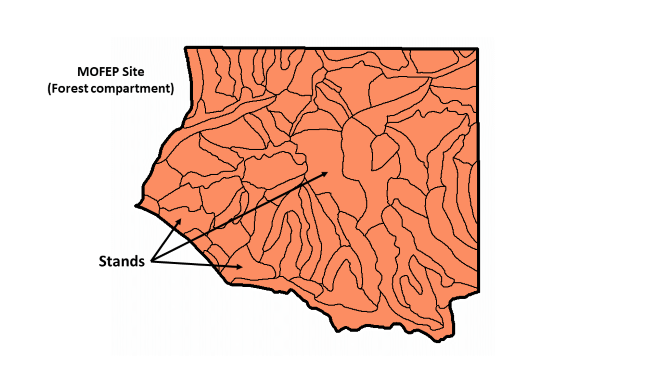
Within each management system there are various harvest methods available for foresters to use to help accomplish their management objectives. These harvest methods are applied at the stand level. Only a portion of stands within a site are treated during each harvest entry and it is for this reason that MOFEP is a 100+ year project; it will take that long for the entire site to be conditioned to its assigned management system. Once the entire site has been conditioned to its management system, even-aged sites will resemble a patchwork of stands, each comprised of trees of similar ages grouped together, while uneven-aged sites will have a mixture of tree ages across the entire site. In no harvest management, the forest is left alone to grow and mature naturally without intervention and serves as our experimental control. The experimental control allows researchers to determine if the ecosystem response is due to forest management or other factors such as climate change.
Even-aged Management

In the even-aged system, trees are cut using methods such as thinning and regeneration harvests (e.g., clearcuts with reserves). Thinning removes smaller or unhealthy trees to give more growing space to the healthiest trees. Regeneration harvests remove most trees in a stand so that a new cohort of uniformly-aged trees can be established and start growing.
Uneven-aged Management

With the uneven-aged system, foresters select scattered individual trees or small groups of trees to cut. Uneven-aged and even-aged management remove similar amounts of timber from the sites. To do this, uneven-aged management enters more of the forest stands compared to even-aged management, which only enters a small percentage of stands. Another way to think about it is uneven-aged management is extensive, whereas even-aged management is intensive.
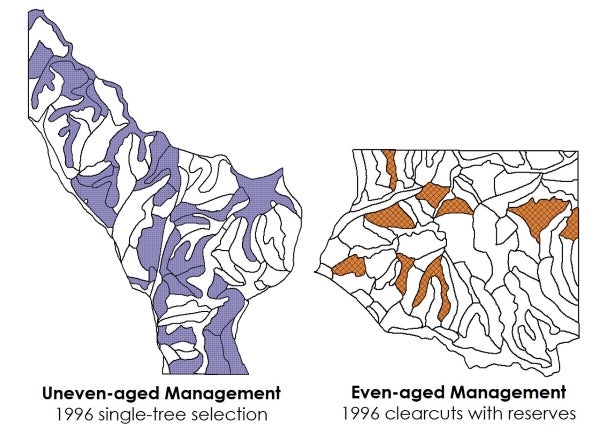
No Harvest
In no harvest management, trees will die of natural causes, but are not cut down. Monitoring uncut forests provides a comparison of how the forest changes naturally to how it changes after tree harvesting.

By putting the three forest management systems into action in a controlled way, researchers can observe both the immediate and long-term effects of forest management on different components of the ecosystem.
MOFEP Publications (PDF, 134 KB)
MOFEP publication list sorted by year. Project specific publications can additionally be found within their project page.
Published on Jul 07, 2021MOFEP Publications Available on TreeSearch
Published on Jul 07, 2021Proceedings of the second Missouri Ozark Forest Ecosystem Project Symposium: Post-treatment results of the landscape experiment
Published on Oct 17, 2000MOFEP: site history, soils, landforms, woody and herbaceous vegetation, down wood, and inventory methods for the landscape experiment
Published on Aug 31, 2000Proceedings of the Missouri Ozark Forest Ecosystem Project Symposium: an experimental approach to landscape research
Published on Nov 20, 1997Forest in a Looking Glass
Missouri Conservationist Article by Keith Moser.
Published on Dec 02, 2003MOFEP: A 100-Year Forestry Study
Missouri Conservationist Article by Elizabeth Olson.
Published on Dec 01, 2017MOFEP Tours and Field Experiences (PDF, 14 MB)
Learn more about our MOFEP tours and field experiences! See photos from previous group trips.